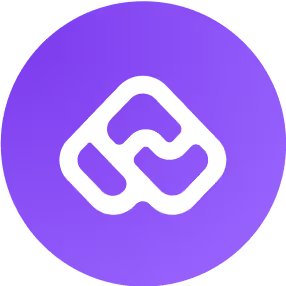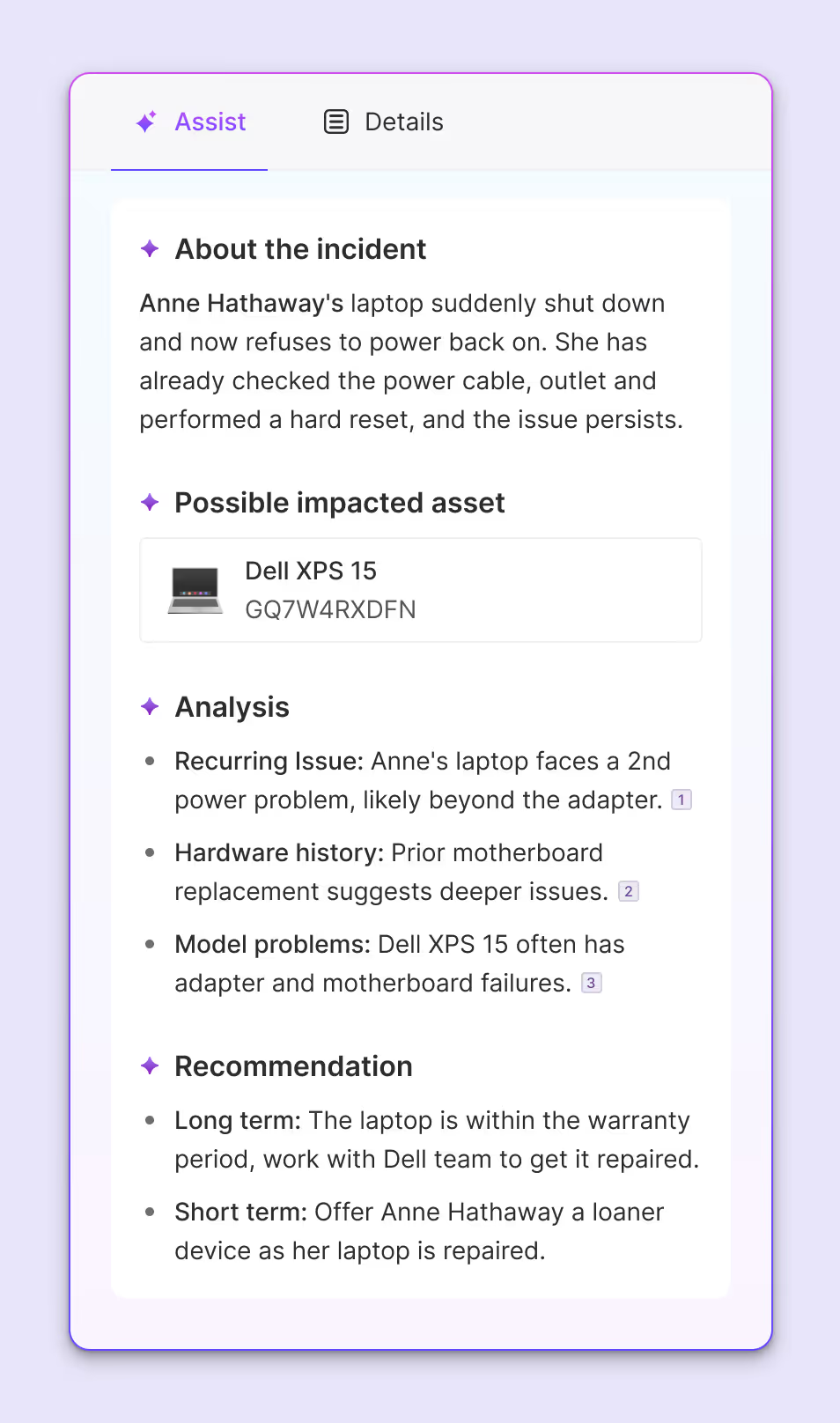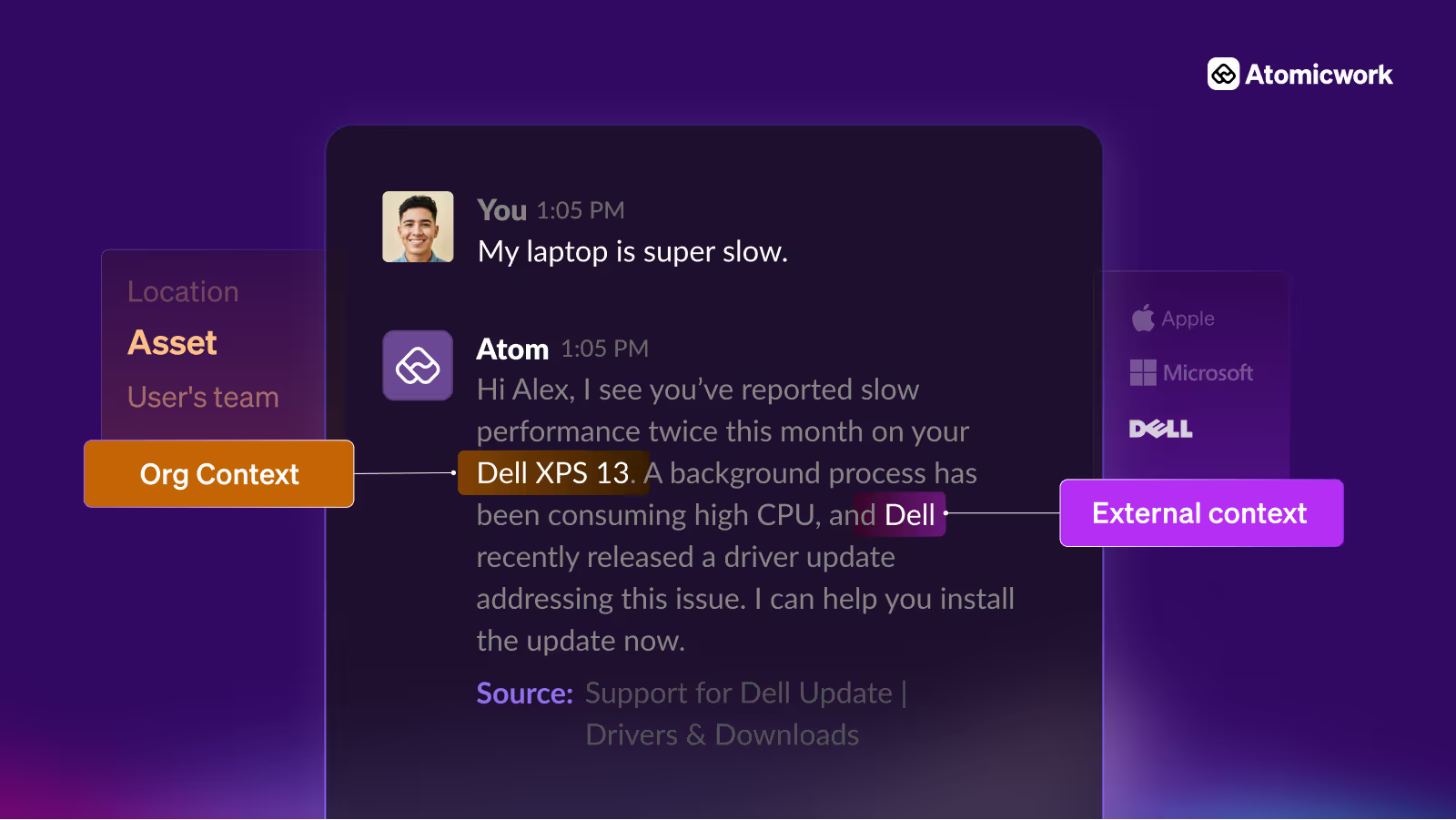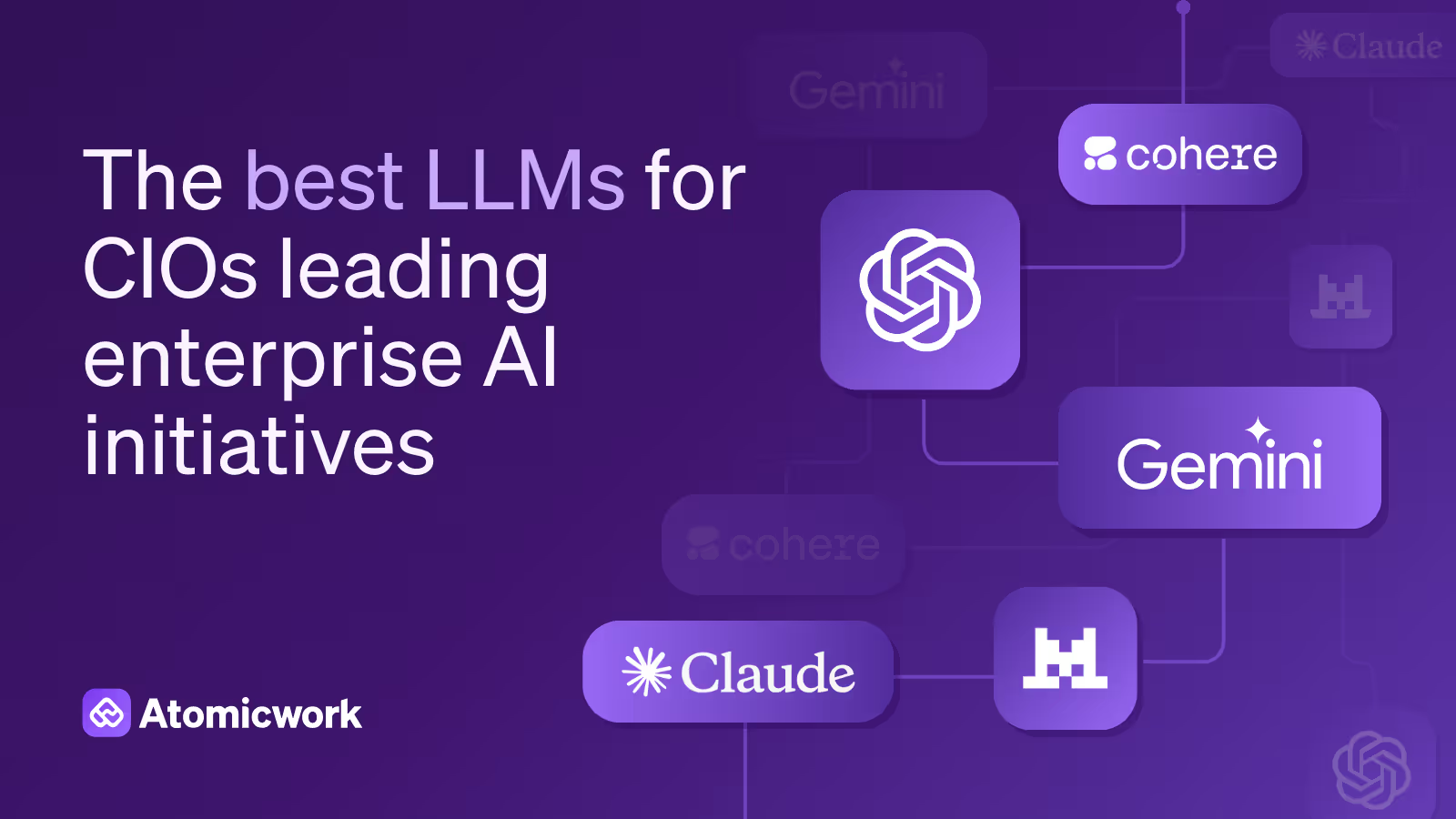




Google and Microsoft are releasing new agentic RAG capabilities every few weeks. No wonder such initiatives are driving enterprise interest in AI systems that can route queries, plan multi-step responses, and pull from multiple data sources without constant human intervention.
While the technology shows promise for handling complex user support scenarios, CIOs need to understand the gap between research demos and production reliability.
Early implementations are already appearing in enterprise environments, but success depends heavily on proper guardrails, monitoring, and fallback mechanisms. The organizations getting ahead now are those building controlled pilots while the technology matures.
Waiting too long means playing catch-up when agentic RAG becomes table stakes for competitive user support.
This guide will help CIOs understand when and how to implement agentic RAG for reliable enterprise user support.
Picture your current IT help desk scenario. An employee asks, "How do I set up VPN access for the new remote office?" Your traditional RAG system searches your IT documentation, finds a generic VPN setup guide, and returns it.
The employee then has to figure out which parts apply to their specific situation, what credentials they need, and who to contact for approvals.
Now imagine an agentic RAG system handling the same request. It recognizes this is a multi-step process requiring different information sources.
The system:
It returns a personalized setup guide with pre-filled credentials and next steps. The difference comes down to contextual intelligence and decision-making.
Traditional RAG follows a straight line: query comes in, system searches the knowledge base, returns relevant documents, and generates a response.
Agentic RAG adds decision points throughout the process:
This creates a feedback loop where the system can recognize when its first attempt didn't work and automatically try different approaches. Instead of returning irrelevant results, agentic RAG keeps refining its search until it finds useful information or determines no answer exists in the available sources.
The key difference lies in decision-making at each step, rather than blindly following a linear process from query to response.
At a glance, the key differences between traditional and agentic RAG for businesses include -
The implementation of enterprise agentic RAG typically focuses on five high-impact areas where autonomous reasoning and multi-source data retrieval create measurable business value.
These use cases address the most resource-intensive aspects of IT operations while improving user experience and compliance outcomes.
Your employees lose productivity when they can't get quick answers to IT questions. Traditional support systems create bottlenecks, either by forcing users to wait for human agents or by providing generic responses that fail to address their specific problems.
Agentic RAG transforms this by providing:
Your IT teams spend significant time searching through scattered documentation, policy updates, and troubleshooting guides, leading to inconsistent responses and delayed incident resolution.
Agentic RAG creates unified knowledge operations through:

Change management involves coordinating stakeholders, understanding dependencies, and ensuring compliance - processes where manual approaches often miss critical connections.
Agentic RAG can enhance the process by pulling information accurately on dependency reviews, maintenance window checks, and business process impact assessments to reduce change-related incidents.
Compliance requirements span multiple frameworks, making it difficult for teams to find relevant guidance quickly while maintaining proper documentation.
Agentic RAG addresses compliance needs through data retention questions pulled from multiple sources like from GDPR, industry regulations, internal policies, and vendor contracts simultaneously. All responses also include source references, regulatory authority citations, and complete logs of queries, responses, and decisions for governance reporting.
Enterprise IT increasingly involves visual information - diagrams, screenshots, equipment photos, and video content that traditional text-based systems can't process easily.
Agentic RAG is multimodal enabling the integration of images, videos, and documents for troubleshooting several IT support scenarios.
The decision between traditional and agentic RAG hinges on four key factors that determine whether the additional complexity and cost justify the improved capabilities, namely -
When tasks require multi-step reasoning across systems like checking application logs, network latency data, overlapping policies, and recent change requests for complex troubleshooting, agentic RAG works best. Reserve traditional retrieval methods for single-hop queries that have direct answers in one source, such as retrieving password policies or accessing reference materials like contact lists or configuration docs.
Agentic RAG handles dynamic information like real-time system status, shifting regulatory requirements, or configuration changes efficiently by continuously adapting to new inputs across systems. In contrast, traditional RAG is better suited for stable, time-tested content such as established procedures, technical references, and historical records that rarely change and require consistent retrieval rather than reasoning.
When certain tasks have actual tool execution linked to information retrieval, like provisioning access after pulling information regarding access policies, agentic RAG is better-suited. Traditional RAG fits scenarios that are solely informational in nature; offering guidance, sharing contextual knowledge, or retrieving reference documentation without directly interacting with or modifying systems.
Agentic RAG plays out well for high-stakes compliance and audit scenarios where traceability and accountability are critical. It can generate detailed audit trails, cite specific regulations or policy clauses, and document the reasoning behind each decision, supporting workflows that require human approvals or preserved decision context. Meanwhile, traditional RAG works well for low-risk queries where standard documentation and logging are sufficient.
In essence, the following matrix can help decide the scenarios where agentic RAG wins over traditional RAG -
High complexity + dynamic sources + action requirements + strict compliance = Agentic RAG
Low complexity + stable sources + information-only + basic compliance = Traditional RAG
That being said, Agentic RAG typically costs 3-5x more in token usage and infrastructure overhead with an additional latency of 2-3 seconds may impact user experience for simple queries. Start with pilot implementations in your most complex use cases where traditional RAG demonstrably fails to provide complete solutions.
Enterprise agentic RAG implementations require security controls at every stage of the pipeline.
Agentic RAG represents a strategic inflection point for enterprise IT operations. While traditional RAG handles routine queries effectively, complex multi-system workflows require the autonomous reasoning capabilities that only agentic systems provide.
However, the infrastructure investments and operational expertise required mean waiting until agentic RAG becomes standard practice, which puts organizations at a disadvantage.
CIOs should identify their top resource-intensive support scenarios where traditional RAG consistently fails. Build pilot implementations with proper guardrails and cost controls to validate business cases before broader deployment. The organizations that master agentic RAG will now define competitive baselines for enterprise user support.
Agentic RAG (Retrieval-Augmented Generation) in enterprise AI systems is where intelligent agents combine data retrieval with autonomous reasoning. Unlike traditional RAG, which only fetches relevant data to support an LLM’s response, Agentic RAG allows the AI to reason, plan, and act based on that information. It integrates retrieval with reasoning engines, enabling agents to use enterprise data securely while making context-aware decisions.
Traditional RAG focuses on augmenting LLMs with factual context to retrieve information to improve accuracy. However, it remains reactive and limited to a single-turn query. Agentic RAG introduces multi-step reasoning, enabling AI to reason across multiple data sources, invoke APIs, or chain tasks autonomously. For enterprise IT leaders, this shift means AI that can proactively support end users and not just answer questions to enhance productivity, governance, and reliability across business systems.
Agentic RAG framework typically includes -
Modern enterprise platforms combine RAG with organizational policy data and telemetry visibility to ensure trust, traceability, and scalability across AI systems.
Agentic RAG introduces context-aware automation into IT service management and operations. IT teams gain faster access to accurate knowledge, leading to reduced MTTR (Mean Time to Resolution) and fewer escalations. Agentic RAG helps build self-healing IT systems driving both efficiency and resilience in enterprise environments.
Take the example of an IT virtual assistant powered by Agentic RAG. When a user reports a network outage, the agent doesn’t just retrieve troubleshooting guides; it retrieves incident history, queries monitoring APIs, and drafts a potential root-cause analysis. This autonomous orchestration across data sources and tools shows how Agentic RAG goes beyond chat-based assistance to enable proactive, multi-step problem-solving for common troubleshooting. For CIOs, this means lower downtime, faster decisions, and enhanced workplace productivity.







